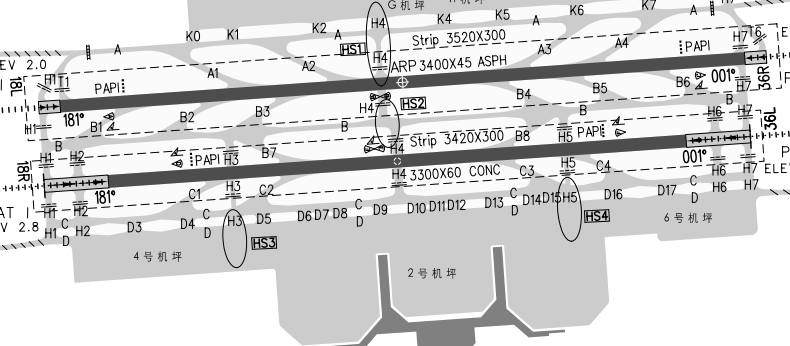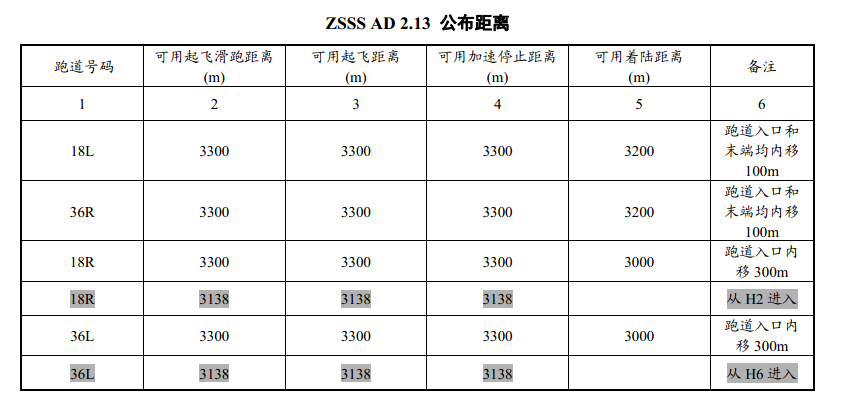内容有更正,见评论。
在执照考试时,说到跑道入口内移是否影响起飞距离?我以往的知识是,落地方向的入口内移,仅影响这一头的落地距离LDA。不会影响起飞距离TODA/TORA。不会影响对头跑道的任何距离。
但是有个考生给我一个例子:虹桥
对于18L/36R来说,物理跑道3400米,18L入口内移100米,落地距离应该为3300,但是细则里是3200米。起飞距离应该是3400米,但是细则里是3300米。这说明对头的入口内移影响距离!!!
但是反观18R/36L来说,物理跑道3300米,18R入口内移300米,落地距离3000米没错,起飞距离3300米也没错。说明对头的300米内移没有影响距离!!!
当时我就晕了。
我咨询了性能人员,以及自己找了国内的标准都没找到依据。
所以,按以往的做法只能去FAA或ICAO找找。
AIM Section 3. Airport Marking Aids and Signs
2. Displaced Threshold. A displaced threshold is a threshold located at a point on the runway other than the designated beginning of the runway. Displacement of a threshold reduces the length of runway available for landings. The portion of runway behind a displaced threshold is available for takeoffs in either direction and landings from the opposite direction.。。。。
FAA说的已经很明确了。
ICAO 附件14 3. Calculation of declared distances
3.5 Where a runway has a displaced threshold, then the LDA will be reduced by the distance the threshold is dis-placed, as shown in Figure A-1 (D). A displaced threshold affects only the LDA for approaches made to that threshold; all declared distances for operations in the reciprocal(双向) direction are unaffected.
ICAO也说得很明确了。所以我以前的理解没错。
至于为什么虹桥的入口内移会有那么奇葩的结果?有一种说法是,如果跑道入口内移是因为道面问题,就不能算做起飞距离。(只是传说)
说在最后,实际运行时,一切距离以AIP公布的为准。上文就当我瞎掰吧。



更正!!!!!!!
也许是我想多了。经过微博上“那年2018”的提醒,18L/36R的AIP表格里写的是”入口和末端“均内移100米。因此3400米的跑道,是末端内移100米影响了起飞距离,而不是入口内移100米影响了起飞距离。
反观18R/36L的表格写的是入口内移,没写末端内移。
这么明显的区别,我当时怎么没发现呢。。。好坑啊。
最后还是一句话,跑道入口内移仅影响着一头的落地距离。